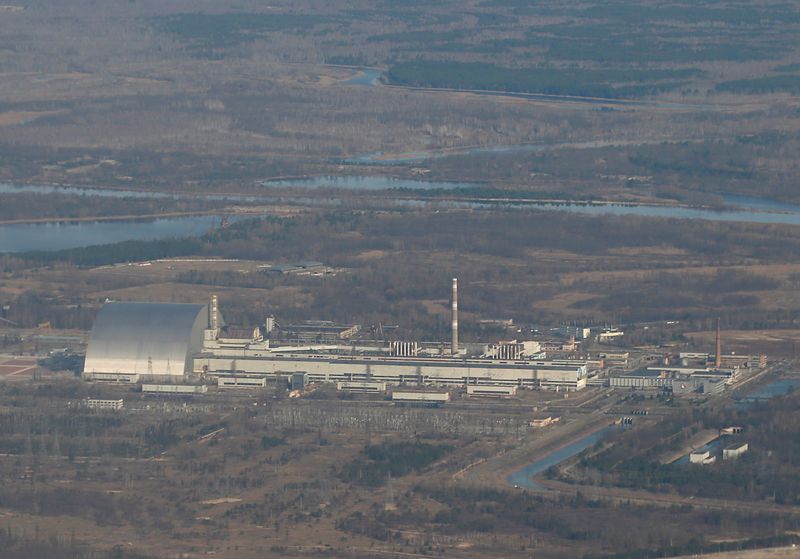KYIV (Reuters) – Scientists have recorded a rise in nuclear activity in the destroyed nuclear reactor at the Chernobyl power plant in Ukraine since it was covered over in 2017, but the rise has levelled off and does not exceed safety standards, staff said on Wednesday.
Staff at the plant said the rise in “neutron flux density”, which if significant could indicate an uncontrolled nuclear reaction, did not pose a threat of such an event based on their mathematical models.
High levels of radiation and damage mean it is not possible to determine precisely the situation under the destroyed block.
“After the establishment of a new safe confinement which has been in the designed position for more than four years, an increase in the neutron flux density is actually observed,” scientists at Ukraine’s Institute For Safety Problems Of Nuclear Power Plants said in a statement.
“At present, the readings of the sensors in all rooms have stable values without an upward trend. The current levels do not pose a threat of a self-sustaining chain reaction,” the Chernobyl plant said in a separate statement.
The fourth rector at Chernobyl, 108 km (67 miles) north of the capital Kyiv, exploded in April 1986 during a botched safety test, in the world’s worst nuclear accident. Clouds of radiation were sent out across much of Europe, and tens of thousands of people were forced to evacuate.
Scientists say the increase in neutron flux was recorded in a unit that nuclear fuel from the destroyed reactor had got into, possibly during the installation of a new shelter over the reactor.
Scientists at Ukraine’s Institute For Safety Problems Of Nuclear Power Plants said that before work on installing the new shelter began in late 2016, fuel was cooled by rainwater, which had since disappeared.
“Based on predictive estimates, it is expected that in the future there will be an increase in the neutron flux density, which will be determined by the process of moisture loss,” they said in a statement.
“Current experimental data has confirmed this scientific hypothesis,” they said, adding that they were carefully studying and monitoring the damaged unit.
(Reporting by Pavel Polityuk; Editing by Hugh Lawson)






















